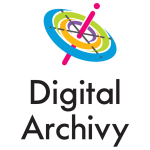Case Studies
Case Studies and Examples
Digital Archivy is a one-stop full-service shop for digital archiving and content management services. The two Case Studies b elow illustrate examples and outline benefits gained from digital archivy.
elow illustrate examples and outline benefits gained from digital archivy.
As technology and media change, people and process evolve as well. As a result, it is difficult for institutions to identify challenges early and leverage situational awareness to improve their current state. They needed a clear-headed outsider’s perspective. In the following examples, a combination of factors led to implementation of solutions that were effective and provide positive, valuable, and measurable results.
Case Studies 1: Animation Studio: Digital Asset Management (DAM) System
THE PROBLEM
As production wound down on Season 1 of a children’s animated TV show, executives faced a big problem. The show was a big hit and network renewed it for forty new episodes in Season 2. But, the studio was receiving increasing numbers of requests to develop ancillary projects based on characters, locations, and plots. These included books, puzzles, games, etc. The number of image requests was growing exponentially as Season 2 production started. At the time, they lacked a central repository of digital assets. Show runners and producers were struggling in two cities to keep up with new and ongoing projects. They were all on tight schedules and they needed help fast.
THE SOLUTION

Peg + Cat courtesy 100 Chickens Productions
A Digital Archivist was engaged to work with IT to select, set up and launch a DAM. The Digital Archivist met with the IT Director and two Producers to identify functional requirements and timelines. The Supervising Producer also shared lists with episode names, format types, and other information.
After reviewing the data, the Digital Archivist assembled documentation from design schedules. These contained
- episode numbers and names
- inventory of each episode’s titles (with quantity of assets, metadata, etc.P
- artists’ name
The Digital Archivist reviewed the source materials. Then he designed a metadata schema with required fields and began developing a controlled vocabulary and corporate taxonomy. This helped bridge gaps in differences between descriptive terms and numbering systems used by the network and the studio. The Archivist met with Lead Designers and Producers to review requirements and to set up rules and regulations to automate capture and ingest of assets.
THE IMPACT AND OUTCOMES
After launching the archive, the studio and network executives suddenly had access to all backgrounds, characters and props based on each episode number. This improved their ability to find and access the files they needed for Season 2 production. They recognized new efficiencies immediately:
- final-approved versions of assets are accessible and
- images can easily be located and re-used for reference, production and inspiration
- security and trust has been improved by centralizing the repository.
Most importantly, the studio has integrated the DAM into its daily workflow for production and ancillary projects. As ancillary projects are announced, they can move quickly: the DAM gives them the power to search, find, deliver and hand-off images easily. This ensures additional benefits and value through the multi-purpose use and re-use of assets.
.
TESTIMONIALS
“I use the DAM almost every day! David understood our needs, and carefully mapped out a thoughtful plan to catalog all pre-existing files, and organize all future assets. In just a couple weeks he captured descriptive metadata for thousands of backgrounds, props, character files, and effects.”
–Creative Director, Animation Studio based in NYC
The Director of Health Marketing and Media was planning to retire. During his 20-year tenure, the Director had produced and fought for many successful and hard-hitting marketing campaigns. These addressed the most urgent and pervasive public health issues: smoking; obesity; infectious diseases; etc.. Some campaigns were quite successful, but others were forgotten. As a result, the Director saw value in archiving and preserving the hard-hitting campaigns.
THE PROBLEM
The Director was concerned that there were no formal systems for knowledge transfer. He had secretly saved and stored examples from a portion of the Department’s recent Marketing recent history, but he recognized they needed help with archiving. He wanted to raise awareness of resources, increase knowledge and ensure that the institutional memory would not be lost with his departure.
The campaign materials were stored in a closet. They consisted of a variety of sizes and print formats from the size of a postcard to a subway poster-sized advertisement. Over 20 years, the language and formats had changed. Departments, topics, people, strategies, campaign names, messaging and delivery systems all had changed too. The Director recognized there was value to be found in the history.
THE SOLUTION
A team of archivists surveyed and inventoried the print materials. The physical materials included posters, signs, fliers,
informational packets, design kits, and other items. After surveying, the team developed an inventory, met with with staff and wrote a Recommendations Report. This contained a roadmap and costs for a phased approach to create an in-house centralized digital repository.
After reviewing the Recommendations Report and requesting help, the Director received funding for the next phase. Then, an archivist mapped metadata and shot reference photos. She updated the inventory, attached reference images and documents to records and then published them on an intranet to provide access on a stand-alone system.
THE OUTCOMES
By the end of the project, the Department launched a digital repository containing nearly 1000 media assets documenting 70 years. At his retirement party, the Director thanked us and we presented him with a mid-20th century scrapbook full of clippings that the team had had digitized. By establishing a central digital repository, the Director and the Department both gained awareness of its long history and significantly increased their pride in their work.
Check out their Public Health Library.
If you would like to hear about some of our other Case Studies, please check out our Clients Page for more examples.

